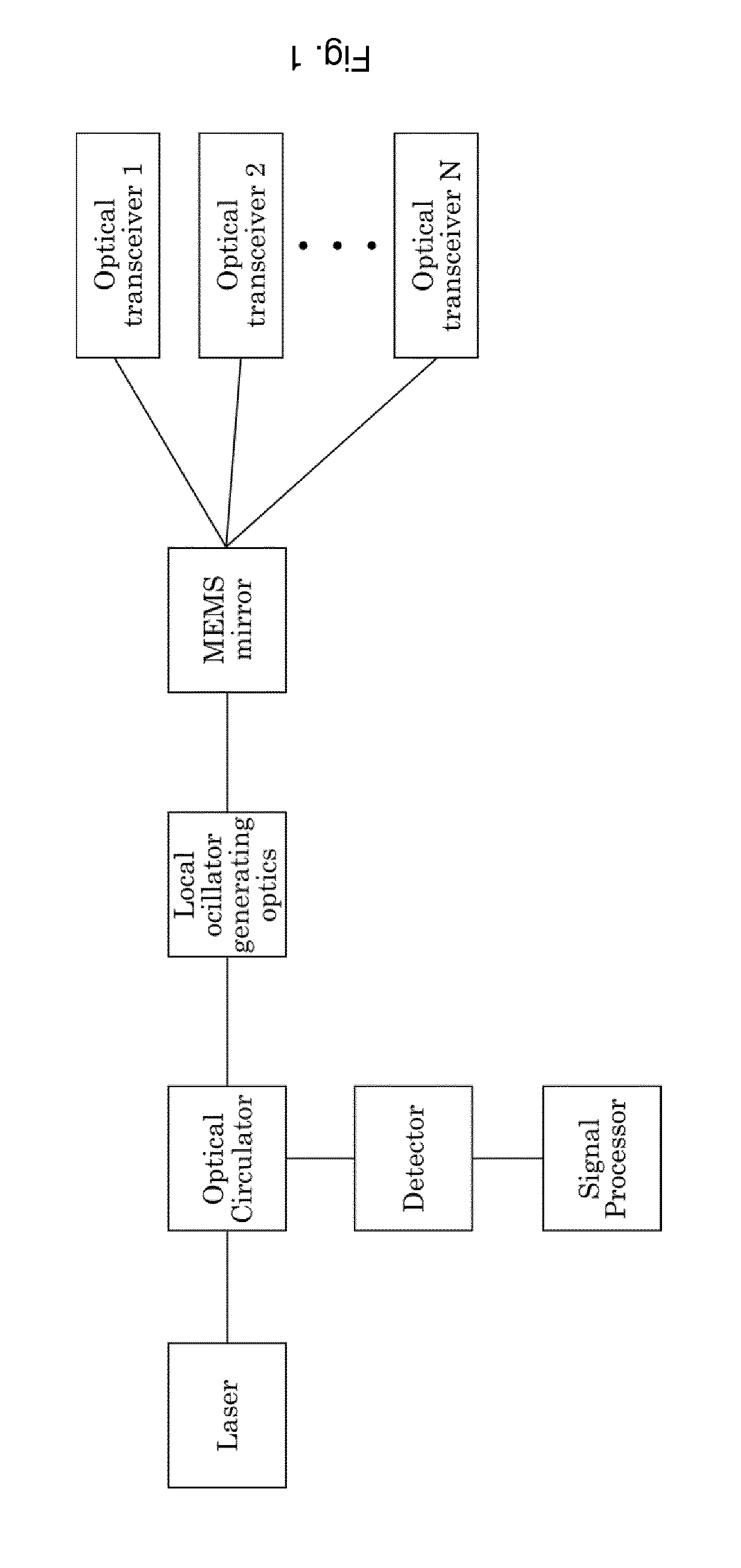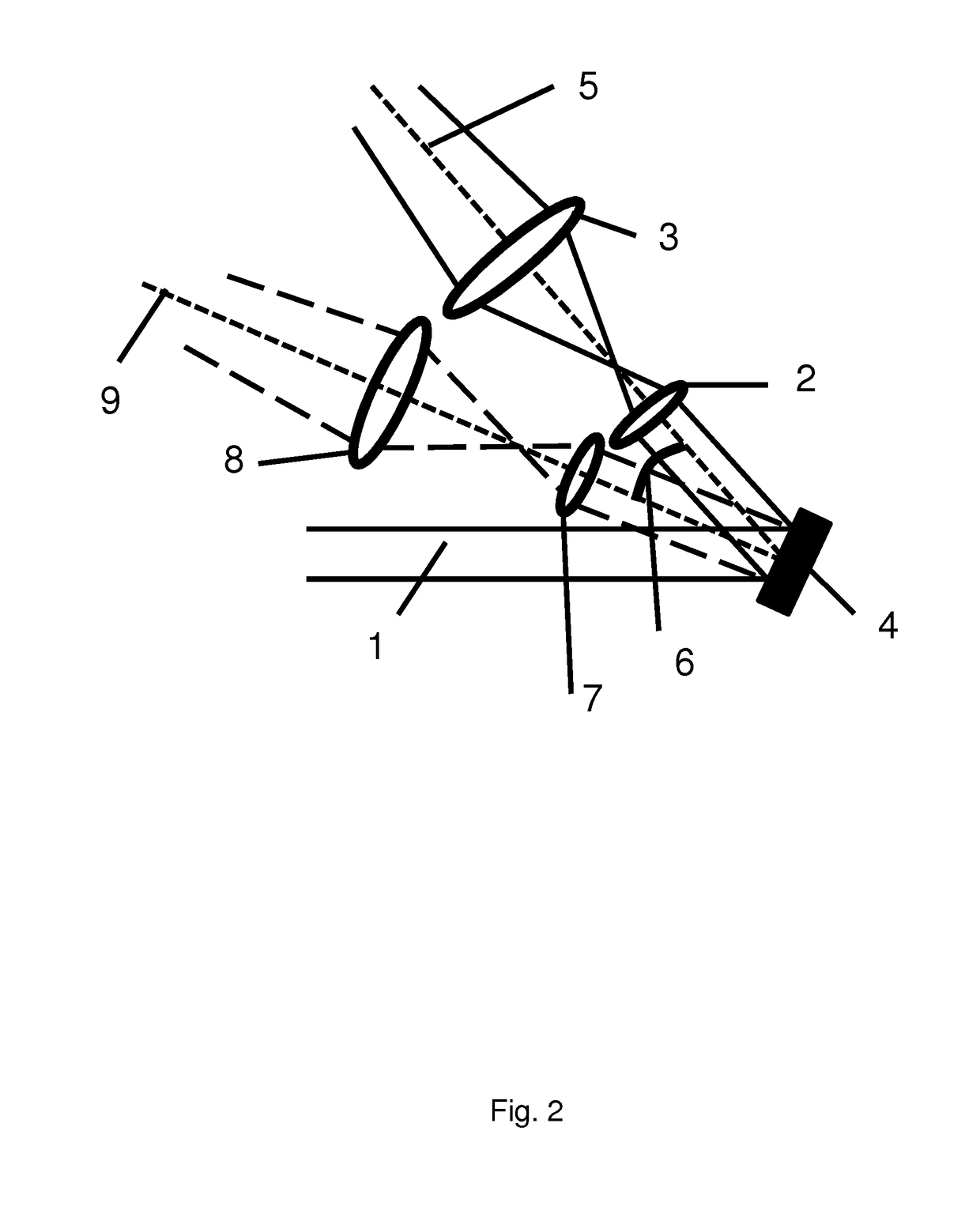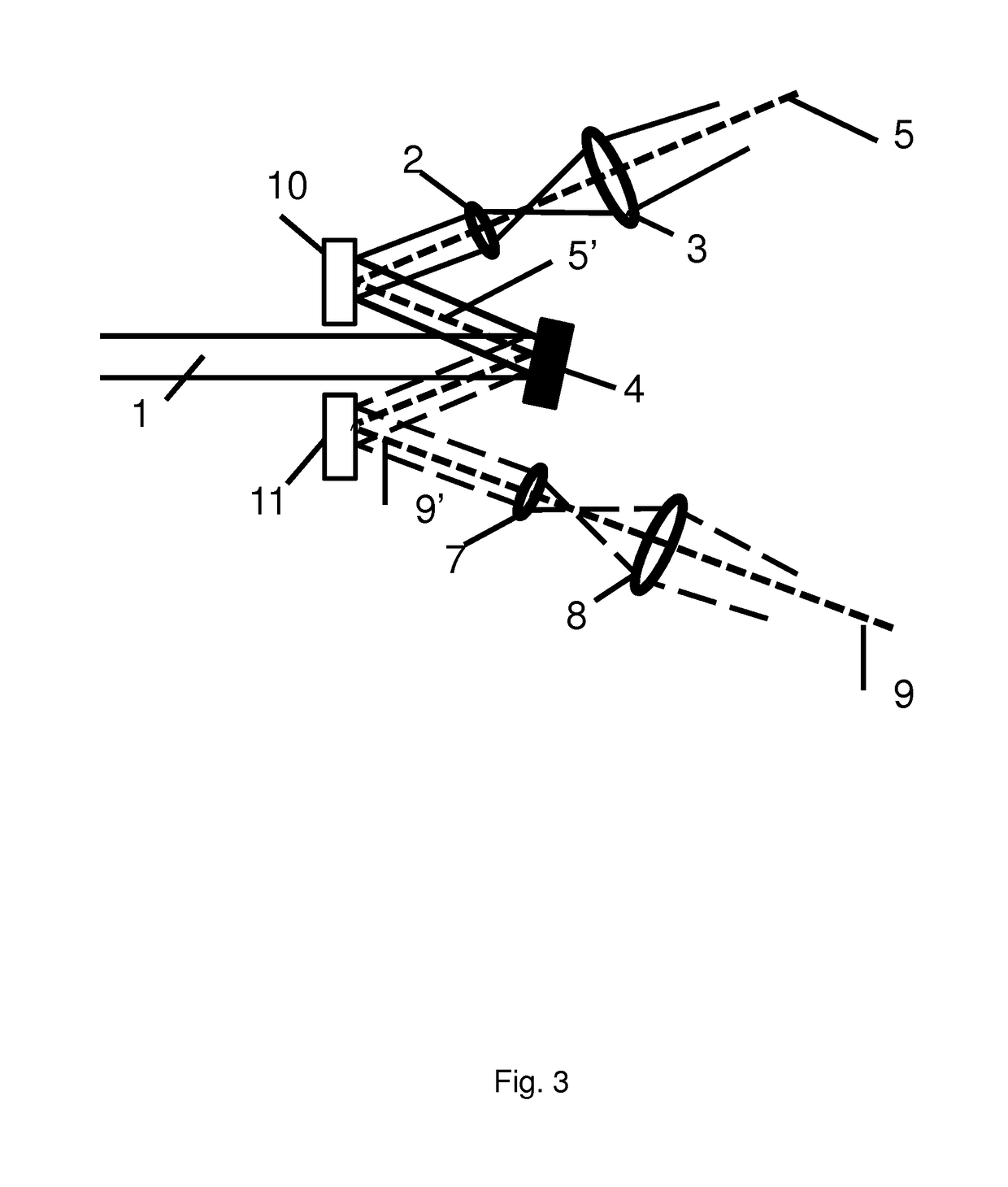Lidar based on MEMS
- Summary
- Abstract
- Description
- Claims
- Application Information
AI Technical Summary
Benefits of technology
Problems solved by technology
Method used
Image
Examples
example 1
A Generalized LIDAR System
[0058]FIG. 1 shows an embodiment of the LIDAR system according to the present invention. A laser is optically connected to an optical circulator via a first port. The circulator comprises three ports, and a second port is optically connected to the local oscillator generating optics. The local oscillator generating optics is further optically coupled to a MEMS mirror, which is configured such that it is able to direct light coming from the laser, through the optical circulator, through the local oscillator generating optics, into one of the plurality of beam-focusing optical units, here denoted as optical transceivers. The optical transceivers are configured for receiving backscattered light from a target, such that the backscattered light is able to be directed back into the MEMS mirrors, through the local oscillator generating optics, from which there is a reflected reference beam, which is superpositioned with the backscattered light, into the optical ci...
example 2
A LIDAR System Showing Two Beam-Focusing Optical Units with Optical Elements on a Straight Optical Axis
[0059]FIG. 2 shows an embodiment of the LIDAR system according to the present invention. An output beam 1 is propagating from a beam-generating section (not shown in this figure) towards a MEMS 4, having a reflective element, such that the output beam is redirected between two beam focusing optical units, in this example having two optical elements, in this example a first lens 2 and a second lens 3 in the first beam-focusing optical unit, and a first lens 7 and a second lens 8 in the second beam-focusing optical unit. The MEMS 4 is configured for being tilted at an angle 6 in order to align the output beam to the optical axes for the two optical elements in the beam-focusing optical units. The first beam-focusing optical unit has an optical axis 5, which is the rotationally symmetric axis of the beam-focusing optical unit, and in this case the optical axis coincides with the mecha...
example 3
A LIDAR System Showing Two Beam-Focusing Optical Units with Optical Elements on a Straight Optical Axis
[0060]FIG. 3 shows an embodiment of the LIDAR system according to the present invention. An output beam 1 is propagating from a beam-generating section (not shown in this figure) towards a MEMS 4, having a reflective element, such that the output beam is redirected between two beam focusing optical units, in this example having two optical elements, in this example a first lens 2 and a second lens 3 in the first beam-focusing optical unit, and a first lens 7 and a second lens 8 in the second beam-focusing optical unit. The MEMS 4 is configured for being tilted at an angle in order to align the output beam to the optical axes for the two optical elements in the beam-focusing optical units. The first beam-focusing optical unit has an optical axis 5, which is the rotationally symmetric axis of the beam-focusing optical unit, and in this case the optical axis coincides with the mechani...
PUM
 Login to View More
Login to View More Abstract
Description
Claims
Application Information
 Login to View More
Login to View More - Generate Ideas
- Intellectual Property
- Life Sciences
- Materials
- Tech Scout
- Unparalleled Data Quality
- Higher Quality Content
- 60% Fewer Hallucinations
Browse by: Latest US Patents, China's latest patents, Technical Efficacy Thesaurus, Application Domain, Technology Topic, Popular Technical Reports.
© 2025 PatSnap. All rights reserved.Legal|Privacy policy|Modern Slavery Act Transparency Statement|Sitemap|About US| Contact US: help@patsnap.com



